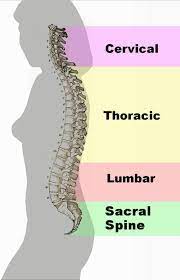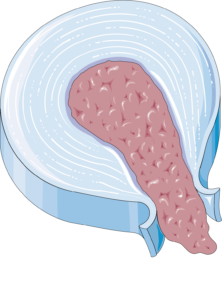Note
| ↑1 | Bagnall, K. M., P. F. Harris, and P. R. Jones. “A radiographic study of the human fetal spine. 1. The development of the secondary cervical curvature.” Journal of anatomy 123.Pt 3 1977: 777. |
|---|---|
| ↑2 | Been, Ella, Sara Shefi, and Michalle Soudack. “Cervical lordosis: the effect of age and gender.” The Spine Journal 17.6 2017: 880-888. |
| ↑3, ↑11, ↑12 | McAviney, Jeb, et al. “Determining the relationship between cervical lordosis and neck complaints.” Journal of manipulative and physiological therapeutics 28.3 2005: 187-193. |
| ↑4 | Hoy, DG1, et al. “The epidemiology of neck pain.”Best practice & research Clinical rheumatology 24.6 (2010): 783-792. |
| ↑5 | Ariëns, G. A. M., et al. “Are neck flexion, neck rotation, and sitting at work risk factors for neck pain? Results of a prospective cohort study.” Occupational and environmental medicine 58.3 (2001): 200-207. |
| ↑6, ↑9 | Kazeminasab, Somaye, et al. “Neck pain: global epidemiology, trends and risk factors.” BMC musculoskeletal disorders 23.1 2022: 1-13. |
| ↑7 | Ariens, Geertie AM, et al. “Physical risk factors for neck pain” Scandinavian journal of work, environment & health 2000: 7-19. |
| ↑8 | Kazeminasab, Somaye, et al. Cit. |
| ↑10 | Fougeront, Nicolas, and Bernard Fleiter. “Temporomandibular disorder and comorbid neck pain: facts and hypotheses regarding pain-induced and rehabilitation-induced motor activity changes.” Canadian Journal of Physiology and Pharmacology 96.11 2018: 1051-1059. |
| ↑13 | Oakley, Paul A., et al. “Restoring cervical lordosis by cervical extension traction methods in the treatment of cervical spine disorders: a systematic review of controlled trials.” Journal of Physical Therapy Science 33.10 2021: 784-794. |
| ↑14 | Been, Ella, Sara Shefi,and Michalle Soudack. Cervical lordosis. The effect of age and gender. The Spine Jounal 17.6.2017 |
| ↑15 | Fernández-de-Las-Peñas, César, et al. “The role of myofascial trigger points in musculoskeletal pain syndromes of the head and neck.” Current pain and headache reports 11.5 2007: 365-372. |
| ↑16 | Nagrale, Amit V., et al. “The efficacy of an integrated neuromuscular inhibition technique on upper trapezius trigger points in subjects with non-specific neck pain: a randomized controlled trial.” Journal of Manual & Manipulative Therapy 18.1 2010: 37-43. |
| ↑17, ↑21, ↑24 | Kazeminasab, Somaye, et al. (Cit.). |
| ↑18 | Manchikanti, Laxmaiah, et al. Age-related prevalence of facet-joint involvement in chronic neck and low back pain. Pain physician 11.1 2008 67. |
| ↑19 | Jimenez-Garcia, Rodrigo, et al. Is there an association between diabetes and neck pain and lower back pain? Results of a population-based study. Journal of Pain Research 2018 1005-1015. |
| ↑20 | Linton, Steven J. “A review of psychological risk factors in back and neck pain.” Spine 25.9 2000: 1148-1156, ansia e disposizione psicologica verso il dolore. |
| ↑22 | Linton, Steven J. (Cit.). |
| ↑23 | Croft, Peter R., et al. “Risk factors for neck pain: a longitudinal study in the general population. ” Pain 93 3 (2001): 317-325. |
| ↑25 | Hoy, DG1, et al. (Cit.). |
| ↑26 | Hogg-Johnson, Sheilah, et al. “The burden and determinants of neck pain in the general population: results of the Bone and Joint Decade 2000–2010 Task Force on Neck Pain and Its Associated Disorders.” Journal of manipulative and physiological therapeutics 32.2 (2009): S46-S60. |
| ↑27 | Hogg-Johnson, Sheilah, et al. “The burden and determinants of neck pain in the general population.” European Spine Journal 17.1 (2008): 39-51. |
| ↑28 | Oakley, Paul A., and Melissa L. Baird. “Do patients drink enough water? Actual pure water intake compared to the theoretical daily rules of drinking eight 8-ounce glasses and drinking half your body weight in ounces.” Journal of Water Resource and Protection 7.11 2015 883. |
| ↑29 | Popkin, Barry M., Kristen E. D’Anci, and Irwin H. Rosenberg. “Water, hydration, and health.” Nutrition reviews 68.8 2010 439-458. |
| ↑30 | Benelam, B., and L. Wyness. “Hydration and health: a review.” Nutrition Bulletin 35.1 2010 3-25. |
| ↑31 | Perrier, Erica T. “Shifting focus: from hydration for performance to hydration for health.” Annals of Nutrition and Metabolism 70.Suppl. 1 2017 4-12. |
| ↑32 | Yaqoob, Uzair, et al. “Characteristics of back pain in young adults and their relationship with dehydration: a cross sectional study.” F1000Research 9.159 2020: 159. |
| ↑33 | Kalman, Douglas S., and Anna Lepeley. “A review of hydration.” Strength & Conditioning Journal 32.2 2010 56-63 |
| ↑34 | Elma, Ömer, et al. “Chronic musculoskeletal pain and nutrition: where are we and where are we heading?.” Pm&r 12.12 2020 1268-1278. |
| ↑35 | Elma, Ömer, et al. “Nutritional factors in chronic musculoskeletal pain: unravelling the underlying mechanisms.” British Journal of Anaesthesia 125.2 2020 e231-e233. |
| ↑36 | Damgaard, Pia, et al. “Evidence of physiotherapy interventions for patients with chronic neck pain: a systematic review of randomised controlled trials.” International Scholarly Research Notices 2013 |
| ↑37 | Dommerholt, Jan, Carel Bron, and Jo Franssen. “Myofascial trigger points: an evidence-informed review.” Journal of Manual & Manipulative Therapy 14.4 2006: 203-221. |
| ↑38 | Lavelle, Elizabeth Demers, William Lavelle, and Howard S. Smith. “Myofascial trigger points.” Anesthesiology clinics 25.4 2007: 841-851. |
















































